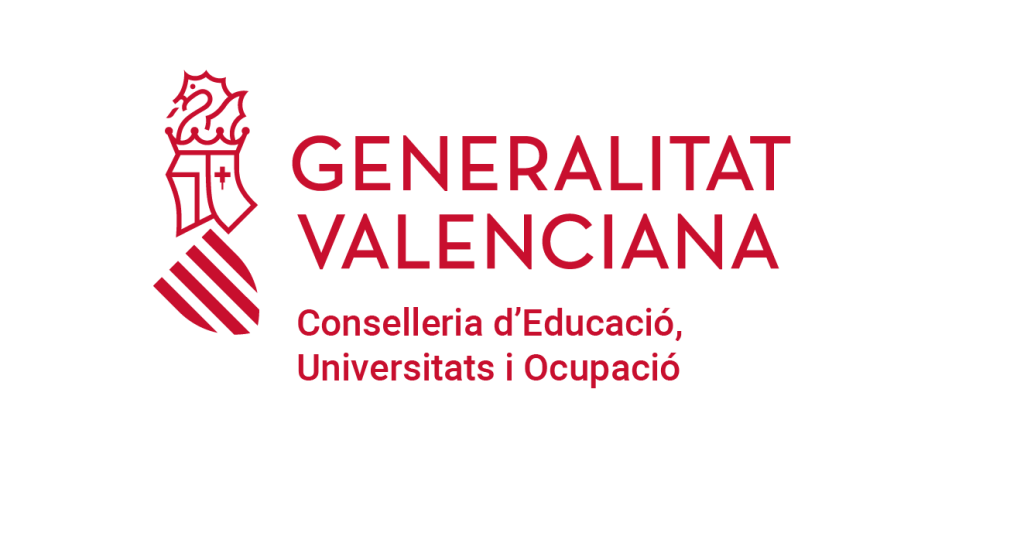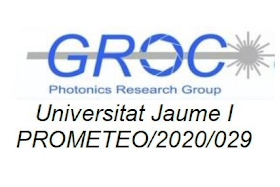- ESTCE, Universitat Jaume I · 12071 - Castellón de la Plana
Smart control of light beams (SLAB)
GROC-UJI
marzo 2, 2023
Recent Posts
Categories
Smart control of light beams (SLAB)
PROMETEO/2020/029
Biomedical research is a fundamental pillar for mankind wellness. Knowledge of the human body and its functioning has allowed us not only to live longer, but also to live better. This research mainly depends on imaging techniques to study living specimens. Nowadays scientists can see, for example, how animal’s organs grow or to spot the development of tumors. However, current technology is limited when trying to study processes inside living organisms. While high-energy systems (X-ray, Computed Tomography) are able to peek at big depths, they use harmful ionizing radiation and have very coarse resolution (millimeter). During the last decades, the refinement of optical techniques has provided new tools to study biological processes with non-ionizing radiation and submicron spatial resolution, able to resolve the details of cells. However, these techniques only work well on thin and quasi transparent samples but fail to provide good results at big depths on in vivo tissue samples due to light scattering
Specifically, this proposal will deploy new instrumentation to increase the penetration depth of optical imaging techniques through scattering media. In particular, we will develop new diffuse optical imaging methods by smart beam delivery and optical detection. We will use microstructured light patterns projected at speeds of tens of kilohertz, methods to detect very weak variations of a light signal even in the presence of noise, and measurement techniques that discriminate ballistic light radiation and characterize the diffuse light using integrating spheres and tomographic detection systems. All of the above aspects make single-pixel imaging (SPI) a promising technology for biomedical imaging. Additionally, by use of a dual-comb laser source, we will move the applications of SPI to the implantation of a real-time LIDAR camera to accurate multidimensional mapping of the environment.

On the other hand, as laser technology and nanotechnology have become essential parts of science, laser synthesis and processing of colloids (LSPC) has become an advanced discipline for addressing real-world problems. LSPC has boost as a promising alternative to conventional methods for the synthesis of nanoparticles thanks to simplicity, the pureness of the nanomaterials, the effortless in-situ functionalization, the low reaction times, the broad library of available materials covering nearly the entire periodic table, and, overall, the absence of unnecessary toxic or hazardous adducts and byproduct. Again, smart delivery of the laser beam at the sample is the key for high-precision laser synthesis and processing of colloids, resulting in the capability to synthesize monodisperse nanomaterials ranging from 1 nm to 10 μm with monodisperse size distributions at the lower end (<10 nm) being accessible.
This project will also provide new devices for laser-assisted synthesis of solar nanofluids that can be used as volumetric radiation absorbers and as heat transfer media in solar energy applications. Also, we will target synthesis of carbon-based nanostructures as high-quality nanoparticles for labeling and sensing diverse parameters of interest in biomedicine. It is worth mentioning that unscreened surface charge of LSPC synthesized colloids is the key to achieving colloidal stability and high affinity to biomolecules as well as support materials, thereby enabling the fabrication of bioconjugates and expanding the results achieved within the project “GLUCOTEAR-Non-Invasive Fluorescence-based Tear Glucose Sensor Integrated to a Smartphone” funded through the Marie Skłodowska-Curie Actions, Individual Fellowships.
This proposal is really a significant leap in the research activities of the group, which of course is based on the background acquired in recent years but faces challenges that are on the frontiers of science such as modern computational optics (“seeing through scattering”), optical engineering (“LIDAR imaging”), energy efficiency (“solar nanofluidics”) and nanomedicine (“laser assisted synthesis of bioconjugated nanoparticles”).
DESCARGABLES:
Tags :
Projects


